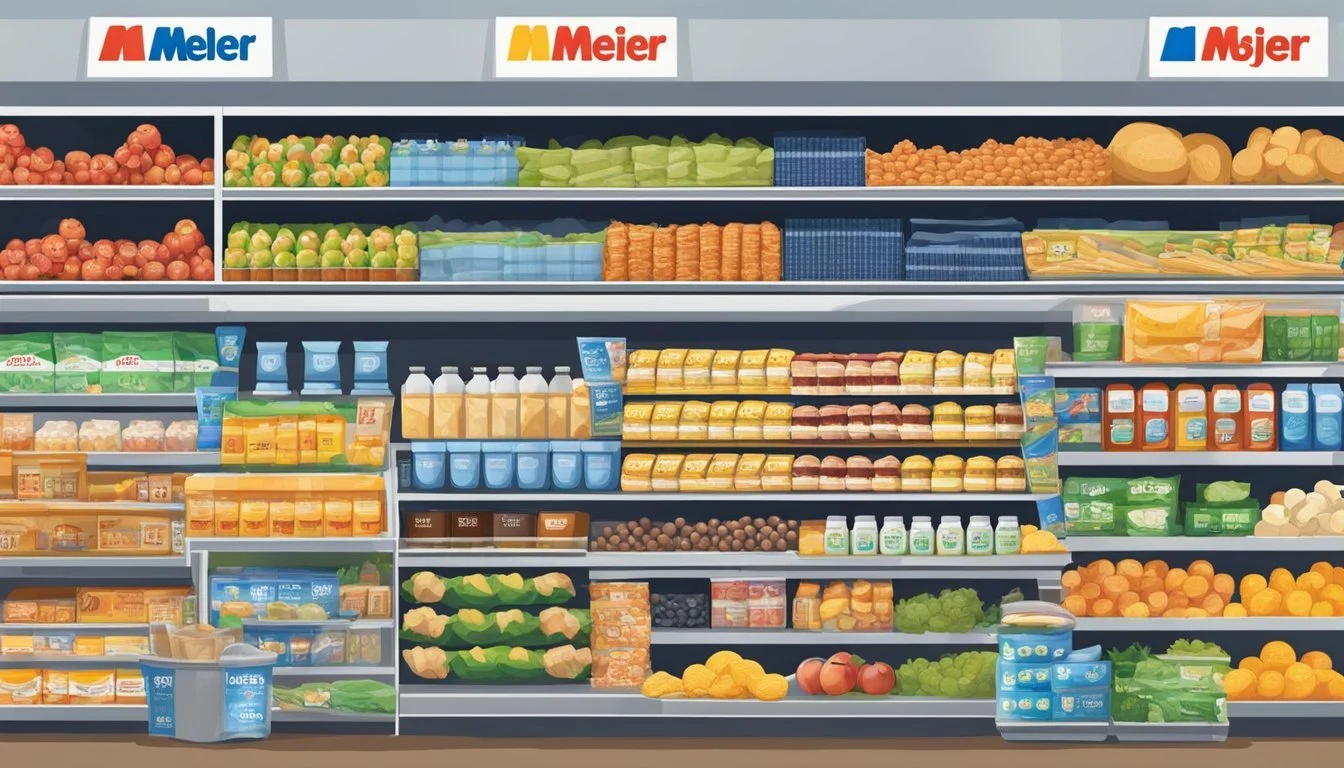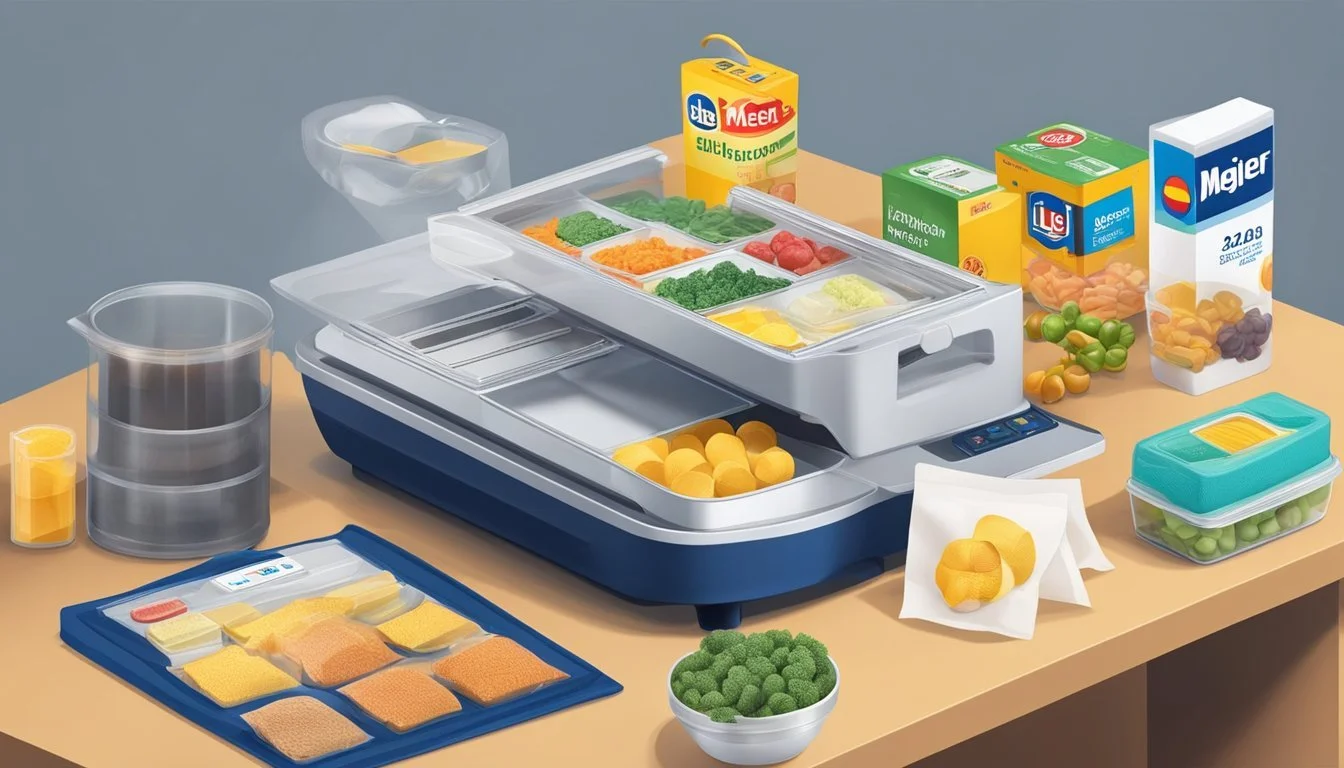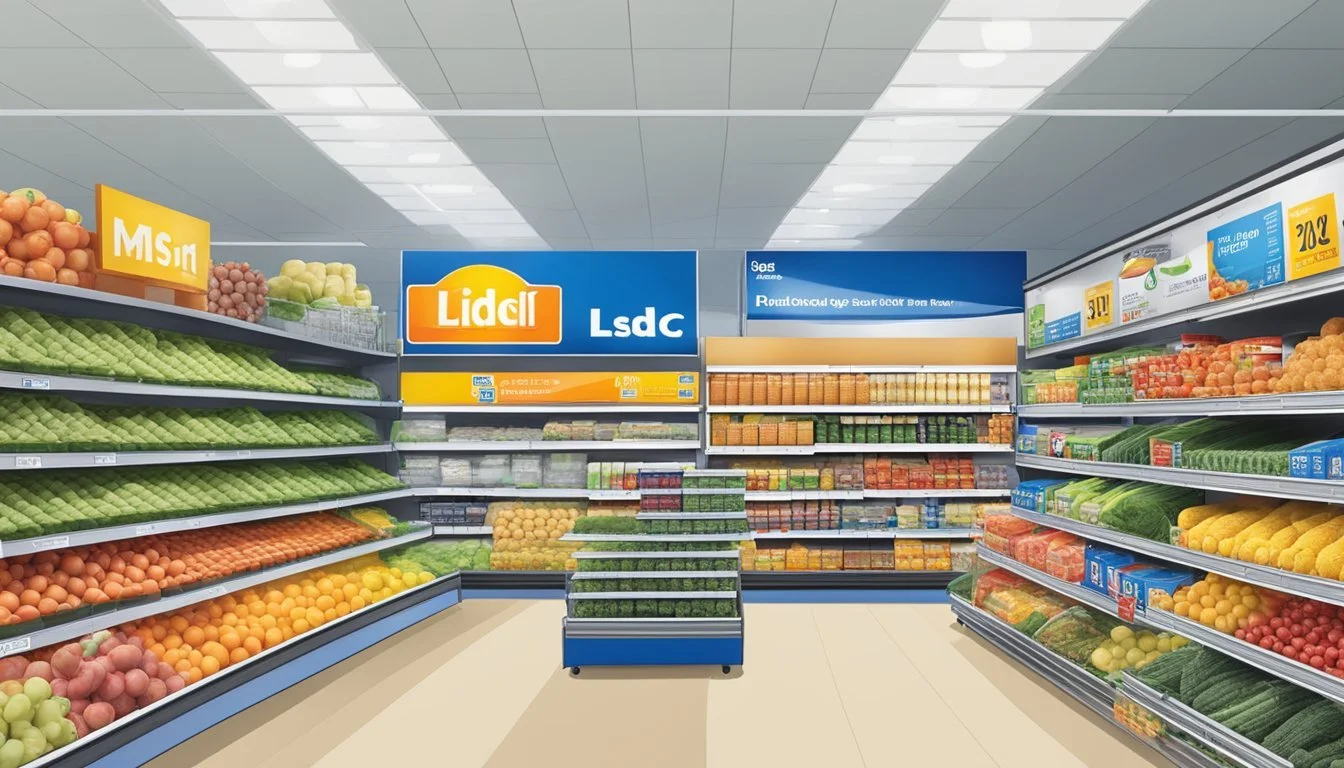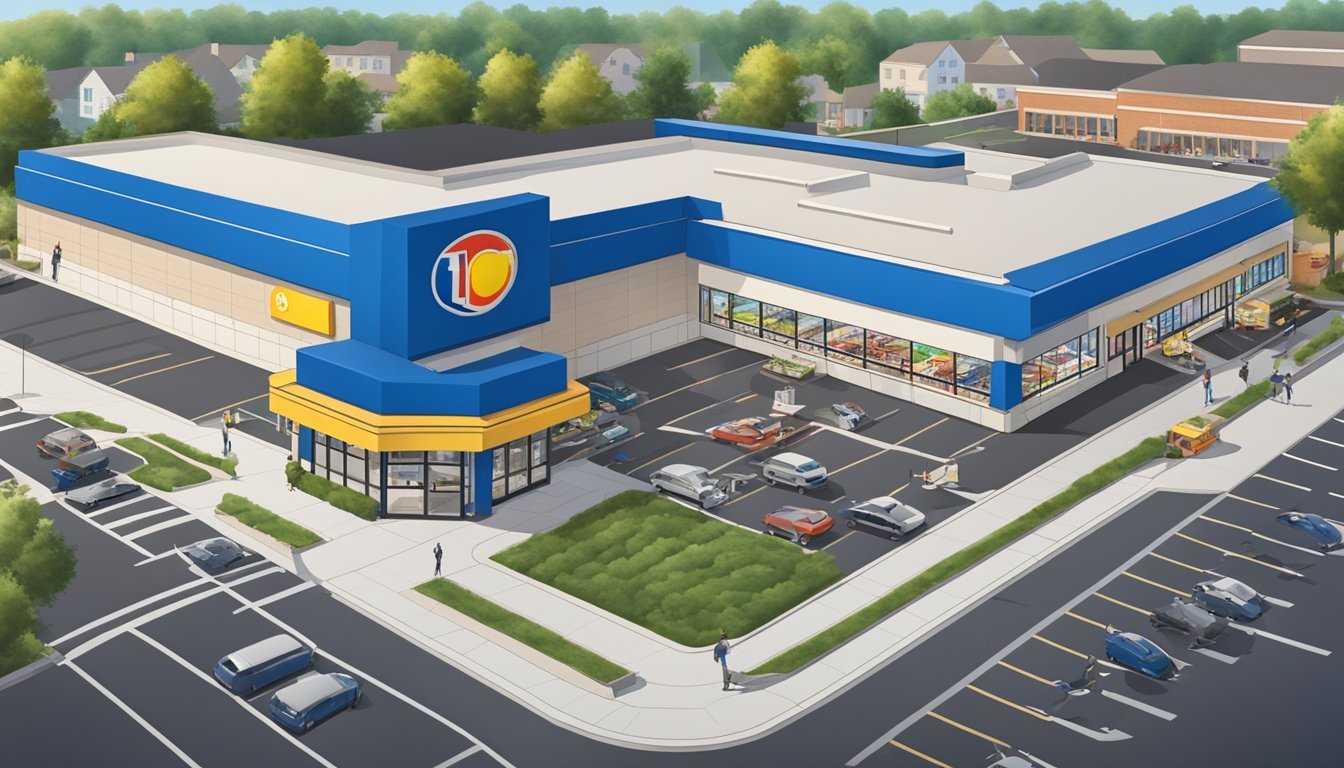Is Meijer Cheaper Than Lidl?
Comparing Grocery Prices and Value
Part of Our Grocery Store Guide with Details on Meijer Prices and Lidl Prices
In today's cost-conscious market, grocery shoppers are more attuned than ever to finding the best deals on their daily essentials. Amid a variety of options, Meijer and Lidl are two prominent grocery chains that consumers consider for their shopping needs. With Meijer's expansive midwestern presence and Lidl's growth as a discount supermarket with European roots, the comparison between the two is increasingly relevant. Price comparison, particularly in the grocery sector, has become a critical factor for households aiming to stretch their budgets further without compromising on quality.
Lidl has been recognized for its low-price model, often attributed to its efficient store layouts and private-label brands, which typically allow for significant savings. Meijer, on the other hand, offers a different shopping experience, with larger stores and a wider variety of both national and private-label brands. They often provide competitive prices on a broad assortment of products, and they have built a reputation for value across their locations.
Determining whether Meijer is cheaper than Lidl requires a nuanced look at various factors, including product selection, location, seasonal specials, and the types of brands offered. Shoppers note that while Lidl might lead in baseline prices for some staple items, Meijer may offer more frequent sales and promotions, thereby influencing the total cost of a grocery haul. As both brands continue to evolve, with Lidl expanding its footprint and Meijer optimizing its pricing strategy, the answer to which is cheaper may not be static, underscoring the importance of ongoing price comparison in the pursuit of grocery savings.
Overview of Grocery Shopping Dynamics
This section provides an analytical perspective on the various elements that shape the consumer's grocery shopping experience, focusing on the prominence of grocery chains, consumer shopping habits, and the impact of geographical factors.
Popularity of Grocery Store Chains
Grocery store chains vary in popularity based on a multitude of factors including price, quality, and range of products offered. Chains like Walmart have established a strong hold in the market by consistently providing lower prices. On the other hand, Meijer positions itself competitively by offering a wide variety of goods that often appeal to a broad customer base.
Consumer Shopping Behavior
Customers tend to prioritize factors such as pricing, convenience, and brand loyalty when deciding where to shop. Price comparisons often guide their choices, with many willing to visit multiple stores to take advantage of deals. Shopping behaviors also reflect the effectiveness of loyalty programs and the perceived value of customer service in different chains.
Influence of Location on Shopping
The location of a grocery store greatly influences consumer access and preference. Stores situated in densely populated areas tend to draw more customers due to accessibility. Conversely, stores in rural or less populated areas may be frequented out of necessity rather than preference. The geographical location also ties into the product prices and availability, with some regions having cheaper options due to lower operational costs.
Detailed Price Comparison
In evaluating whether Meijer is cheaper than Lidl, this section closely examines pricing strategies, item selection, and the impact of regular sales and discounts on overall affordability.
Assessing Price Points
When comparing prices between Meijer and Lidl, it's essential to consider individual item costs. On average, Meijer tends to offer competitive pricing, sometimes undercutting Lidl on select products. However, Lidl is known for its cost-effectiveness, often featuring lower base prices on a wide range of goods. Taking a close look at a standardized set of items is required for a better understanding of how the two stores match up.
Breadth of Items Compared
Meijer is a supercenter that provides a diverse range of products, from groceries to electronics. Lidl, with a focus on groceries, has a more curated selection. The price comparison must consider the variety and types of products each store offers. While Meijer might have consistent pricing across a broader range of categories, Lidl's smaller selection tends to emphasize affordability in its limited range, potentially skewing direct comparisons.
Relevance of Sales and Discounts
Sales and discounts are integral to the retail pricing landscape and can significantly influence the overall cost to the consumer. Both Meijer and Lidl regularly offer deals, but Lidl's discount model often includes weekly deals on select items, while Meijer's sales may cover a wider range of products. For a precise cost comparison, one must account for the frequency and depth of discounts at both stores. These factors can tip the scales in favor of one retailer over the other during different promotional periods.
Examination of Product Quality
In evaluating grocery stores like Meijer and Lidl, product quality often becomes a deciding factor for consumers, particularly in categories like produce, dairy, and bakery.
Overall Quality and Freshness
Meijer stores have built a reputation for offering a wide array of fresh products, particularly in their produce and deli sections. Their commitment is evident in the freshness and quality of their fruits, vegetables, meat, and cheese. Lidl, on the other hand, has also received accolades for the quality of its fresh produce.
Produce: Both retailers regularly stock fresh fruits and vegetables, with attention to seasonal offerings.
Meat and Deli: Consumer reports generally indicate high standards of freshness in Meijer’s meat and deli selections. Lidl's meat selection also stands out for freshness and variety.
Dairy and Bakery: Milk, cheese, and bread are staple items with consistent quality checks at both Meijer and Lidl.
Comparison of Store Brands
Meijer's store brand products, including its dairy, bread, and cheese categories, are recognized for balancing quality and affordability.
Bread and Bakery: Shoppers notice little difference in quality between Meijer's store-brand bread and national brands.
Dairy: Their store-brand milk and cheese are known to match the national brands in both taste and quality.
Lidl’s store brands are a significant part of their appeal, often seen as competitive alternatives to higher-priced national brands.
Overall Store Brands: Lidl's emphasis on store brands extends across many categories, often yielding competitive quality at lower prices.
Organic Produce Offerings
Organic options are increasingly part of the consumer's shopping list, and both Meijer and Lidl cater to this demand.
Organic Selection: Meijer offers an extensive range of organic produce, which includes fruits, vegetables, and dairy.
Affordability: Lidl’s organic produce is often priced lower than conventional options, making it an affordable choice for consumers looking for organic selections.
Both Meijer and Lidl have been responsive to consumer trends emphasizing the importance of organic products, offering quality organics to meet this growing segment.
Cost Analysis for Budget Shoppers
When comparing Meijer and Lidl, budget shoppers focus on getting the most value for their money. They seek the lowest prices without compromising on quality. This section explores where consumers can find the best deals, how they can save on their grocery bills, and the impact of coupons and loyalty programs on their shopping habits.
Finding the Best Deals
Shoppers seeking the cheapest grocery store often find that Lidl offers competitive pricing due to its smaller store size and centralized assortment of goods. Lidl's business model emphasizes efficiency and cost-savings which are typically passed on to the customer. In contrast, Meijer provides a wider range of products, including full-service departments which may lead to higher pricing on some items. For those prioritizing the lowest price, weekly sales flyers and promotional deals play a critical role in both Meijer's and Lidl's strategies to attract customers.
Lidl: Known for its deeply discounted prices on various items.
Meijer: Offers a broader selection but may feature higher regular prices.
Strategies for Saving on Groceries
Shoppers can save money on their grocery bills by comparing unit prices, buying store brands, and purchasing bulk items. Both Meijer and Lidl offer their own store brands, which provide significant savings compared to national brands. Budget-conscious consumers should also pay attention to the seasonal discounts, as certain times of the year bring about better deals on specific categories of groceries.
Lidl: Often has lower unit prices for its store brands.
Meijer: Offers both store brands and national brands, sometimes at a higher unit price.
Utilizing Coupons and Loyalty Programs
For shoppers looking to maximize their savings, understanding and utilizing the store’s discount policies is crucial. Meijer and Lidl both offer loyalty programs that deliver personalized coupons and exclusive discounts, which can further reduce the total cost at checkout.
Lidl: Provides instant savings through its Lidl Plus app, including digital coupons and rewards.
Meijer: Maintains a loyalty program called mPerks that offers customers digital coupons and tracks savings from their purchases.
By carefully leveraging these programs, consumers can frequently purchase their preferred groceries at the lowest price available, increasing their overall savings each shopping trip.
Variety and Availability of Grocery Items
Meijer and Lidl offer a diverse selection of grocery items, but their inventory and stock vary significantly due to differing business models.
Range of Product Categories
Meijer provides a comprehensive range of product categories, including produce, meats, dairy, and packaged goods. Their stores typically carry a wide variety of dry goods and groceries, catering to a broad consumer base. Shoppers can find both national brands and Meijer's own private labels across different categories.
Lidl, known for its European roots, tends to offer a more curated selection. While they stock all the essential categories, like produce, meats, and dairy, their focus is on quality over quantity, often featuring specialty items alongside their regular inventory.
Stock and Supply Considerations
Meijer's large stores are well-stocked, and they leverage robust supply chains to maintain availability. They have seasonal promotions and weekly sales, ensuring regular stock rotation and fresh offerings.
Lidl's smaller footprint requires a different stocking strategy. They emphasize fresh produce and bakery items, with regular deliveries designed to keep the stock fresh and the selection seasonal. Their inventory reflects this, with high turnover of perishable goods to ensure quality.
Specialty and International Foods
Lidl showcases a strong selection of specialty and international foods, often introducing customers to European-inspired items. Their offerings can include unique cheeses, confections, and ready-to-eat meals not commonly found in American stores.
In contrast, Meijer dedicates sections of its vast store to international foods, carrying a variety of ethnic foods that cater to diverse tastes. They tend to have a broader selection of international products compared to Lidl's more selective range.
Each store has its strengths in terms of variety and availability, with Meijer leading in category breadth and Lidl in curated, specialty offerings.
Comparative Shopping Experience
When analyzing the shopping experience at Meijer compared to Lidl, customers prioritize the ease of navigating the store, checkout efficiency, and the availability of various shopping channels such as online and in-store options.
Ease of Shopping
Meijer stores present customers with a well-organized layout, characterized by spacious aisles and clear signage, making it easy for customers to locate items on their shopping list. On the other hand, Lidl offers a more compact shopping environment with a focus on streamlined selection, which may lead to quicker shopping trips but can sometimes result in a limited range of products.
Checkout and Customer Service
At Meijer, checkout processes have been reported to be efficient, backed by helpful staff members. Self-checkout options are also available for customers looking for a quick exit. Lidl, in contrast, traditionally emphasizes speedy transactions at checkout, which can be a significant time-saver for customers during peak hours.
Online and In-Store Options
Meijer provides customers with an integrated shopping experience through its partnership with Instacart, allowing for convenient online shopping along with home delivery or curbside pickup. Lidl has also entered the online space in certain regions but with varying presence and quality of service, which implies that Meijer may offer a more consistent online shopping experience across different locations.
Case Studies and Customer Testimonials
Evaluating Meijer's price competitiveness requires looking at case studies and customer testimonies across various demographics. The insights draw comparisons with Lidl, considering factors such as family budgets, expert analyses, and business perspectives.
Family Shopping Experiences
Families often report their shopping experiences in terms of savings and product variety. Customers at stores like Walmart and Target may see substantial yearly savings. According to anecdotes, a family's average savings at Walmart can range from $1,500 to $2,000, hinting at Meijer's potential for similar or greater cost-effectiveness.
Meijer: Provides a wide selection, appealing to families who prioritize one-stop shopping.
Lidl & Aldi: Value-driven European discounters, known for their streamlined offerings and low prices.
Expert Opinions and Reviews
Reviews from industry experts are crucial for a comprehensive analysis. They weigh in on the quality, variety, and economy of shopping at various retailers.
Podcasts and online review platforms: Experts often discuss that while Aldi and Lidl are very competitive in pricing, Meijer may offer a different kind of value through variety and customer service.
Whole Foods and Trader Joe’s: These often serve as quality benchmarks, with Meijer sometimes compared favorably in terms of its product range, if not always on price.
Business Analyst Insights
Analysts examine market trends, consumer behavior, and competitive strategies to gauge a retailer's performance.
Business case studies: They reveal how Meijer has effectively expanded its consumer base, notably during high-traffic seasons like back-to-school.
Comparative insights: Meijer competes with industry giants like Amazon, Kroger, and Walmart through a combination of broad selection and regional customer targeting tactics.
Geographic Considerations and Market Presence
When examining grocery prices, regional and market influences are paramount. Store chains like Meijer and Lidl often exhibit variable pricing strategies that reflect the cost of living, competition, and consumer preferences within different regions.
Regional Price Trends
In specific locales, such as Kentucky (KY), grocery store chains adjust prices in response to local economic conditions and competitive pressures. Meijer, a supercenter chain with locations primarily in the Midwest and Northern regions, may have different pricing in KY compared to areas with a higher cost of living. Lidl, primarily concentrated on the East Coast, influences regional price trends where it operates. Price variations within a region could be attributed to factors like proximity to distribution centers, local taxation, real estate costs, and the presence of other national brands.
Nationwide Chain Comparison
Meijer and Lidl have distinct footprints across the United States, which affects their pricing strategies.
Meijer: Operates over 250 stores, focused on the Midwest and expanding into other regions.
Lidl: Approximately 170 stores strong within the U.S as of 2023 and growing, impacting competitors' pricing especially in the East Coast markets.
Nationwide, Meijer's approach to pricing often aligns with local competitors, while Lidl's aggressive expansion has been noted to drive down prices in its vicinity more drastically than the entry of other significant players.
International Chain Assessment
While Meijer's presence is confined to the United States, Lidl, as an international chain, leverages its global buying power to often offer more competitive pricing. Lidl's strategy has international backing from its parent company in Germany, known for cost-efficiency and aggressive pricing which translates into local market penetration. Their ability to introduce competitive prices can be especially significant in markets new to Lidl's presence, compelling national and local grocery store chains to reassess their pricing structures in response.
Nutrition and Dietary Concerns
When comparing Meijer to Lidl, shoppers often consider the range and pricing of healthy eating options and products that cater to dietary restrictions. These aspects are integral to maintaining a balanced diet and accommodating the diverse nutritional needs of consumers.
Healthy Eating Options
Meijer provides a variety of products that support a healthy diet, including fresh produce and whole grains. Shoppers can find organic and conventional fruits and vegetables, along with a selection of whole-grain pastas and brown rice. Meijer's commitment to increasing access to nutritious food means customers have options to purchase items like skinny cheese, reduced-fat milk, and natural peanut butter, which contain fewer additives and are less processed. Lidl also offers a range of healthy options, often at competitive prices, making healthy eating accessible to budget-conscious consumers.
Fresh Produce: Organic and conventional options.
Dairy: Reduced-fat milk and cheese varieties.
Grains: Whole-grain pasta and brown rice.
Protein: Selection of eggs, meats, and plant-based alternatives.
Groceries for Dietary Restrictions
Consumers with specific dietary needs can locate products at both Meijer and Lidl. For those requiring gluten-free or lactose-free foods, options such as gluten-free pasta and lactose-free milk are typically available. Additionally, items like unsalted butter and ranch dressings with no added sugar cater to those monitoring their sodium and sugar intake. Both stores provide clear labeling to help customers easily identify these products, although the range and stock might vary by location.
Gluten-Free: Bread, pasta, and snacks.
Lactose-Free: Dairy products such as milk and butter.
Low-Sodium: Unsalted butter and low-sodium cheeses.
Sugar-Free: Condiments and dressings like sugar-free ranch.
Comprehensive Meal Planning
When comparing the cost-effectiveness of meal planning at Meijer versus Lidl, one should consider not just the sticker price but also the variety, quality, and quantity of goods available for a complete family meal plan.
Budget-Friendly Family Meals
For a family of four, creating a meal plan that includes budget-friendly breakfasts, lunches, and dinners is crucial. At Meijer, shoppers might find competitive pricing on items such as bananas for a quick breakfast or snacks, potato ingredients for hearty dinners, and a salad for a nutritious side. Lidl often has its own deals and may offer comparable prices on similar items. Families can also consider incorporating hard boiled eggs as an inexpensive protein source for breakfasts or to enhance a side salad for lunches.
Breakfast: Bananas, hard-boiled eggs, toast
Lunch: Salad with toppings, sandwich, seasonal fruit
Dinner: Protein (chicken, beef), potato side, steamed vegetables
Shopping for Meal Prep
When parents shop for a week’s worth of meal prep, they should carefully select stores that offer the best value for bulk purchases. Both Meijer and Lidl offer a variety of options for family meal prepping. For instance, they could pick up a larger pack of chicken breasts for multiple dinners or a bag of potatoes that can be used in various forms throughout the week.
Create a grocery list that aligns with the meal plan
Look for sales on bulk items needed for the week’s meal prep
Purchase versatile ingredients, like salad greens, that can be used across several meals
Managing Leftovers Efficiently
Efficient management of leftovers is a cost-saving and environmentally friendly approach. Meijer and Lidl typically offer containers and wraps for safely storing leftovers. A family could repurpose last night’s dinner into a new meal, such as turning roast chicken into chicken salad sandwiches for lunch the next day. Additionally, planning for a sweet treat once a week can be a strategic way to incorporate a little indulgence into the budget.
Store leftovers in clear containers for easy identification
Transform leftovers into new meals, ensuring nothing goes to waste
Plan for an occasional dessert, such as a store brand ice cream or bakery cookies, to keep the family meal plan exciting
Analysis of Long-Term Savings
In comparing Meijer and Lidl, consumers need to assess potential savings over an extended period. This analysis takes into account annual spending patterns, bulk purchase benefits, and the cost-efficiency of generic store brands.
Annual Spend Comparisons
Meijer tends to offer competitive sale prices, which may lead to significant savings over the course of a year. On the other hand, Lidl is noted for its aggressive pricing strategy, especially in markets where it directly competes with other discount grocers. By tracking annual expenditures, consumers can identify which store consistently provides the lowest prices.
Meijer:
Potential annual savings: around $1,700
Average annual spend: $5,000
Lidl:
Potential annual savings: up to $2,000
Average annual spend: $4,800
Investing in Bulk Purchases
Consumers can save money at Meijer by taking advantage of bulk purchase deals, which are often available at larger supermarket chains. Lidl, while not typically known for bulk sales, offers comparable lower unit costs that can result in similar long-term savings.
Meijer: Better bulk deals lead to more savings long-term.
Lidl: Consistent low unit prices offer steady savings, even without bulk buying.
Generic Store Brand Benefits
Both Meijer and Lidl have a wide array of generic store brand options that help customers save compared to brand-name equivalents. Meijer's store brands are reputed for quality at a lower price point, while Lidl is renowned for its private-label products that undercut competitors' prices significantly.
Meijer: Customers report satisfaction with the quality-to-price ratio of store brands.
Lidl: The store's generics are often the lowest priced in its operating regions.
Household Essentials and Non-Food Items
When comparing Meijer and Lidl for household essentials and non-food items, consumers should consider availability and pricing of kitchen basics and supplies in addition to the variety and cost of other household goods.
Kitchen Basics and Cooking Supplies
In terms of kitchen basics, both Meijer and Lidl offer a variety of cooking supplies. Meijer carries an array of cooking oils including vegetable oil, olive oil, and canola oil, competitively priced, often with store-brand options that tend to be more affordable. Lidl similarly offers a selection of cooking oils with occasional store discounts.
Seasonings present an opportunity for savings as well, with both retailers providing a range of spices. Meijer's range typically includes salt, pepper, and baking powder, staples for any kitchen, and are available in both brand-name and generic options which may influence cost. Shoppers at Lidl can often find similar products and sometimes at lower price points due to their European sourcing.
White rice and canned peaches, as common pantry items, are available at both stores. Price and brand availability for these products can vary, but Lidl may have the edge in cost-effectiveness due to their streamlined selection of store-label goods.
Supply of Household Goods
In the supply of household goods, Meijer extends a wide array of products from paper towels to cleansers, with promotions that can reduce prices significantly. Meijer may offer coupons and deals on larger packages or bulk items, which are particularly useful for families or those stocking up.
Lidl's strategy leans towards a rotating selection of household essentials with periodic deals that may rival or undercut Meijer's regular pricing. It is worth noting that while Lidl may offer lower prices at times, Meijer's extensive selection can often lead to greater choice for the consumer, including eco-friendly and specialty brands.
Both Meijer and Lidl provide options for shoppers looking to purchase household essentials and non-food items, but the deciding factor often comes down to the shopper’s preference for brand diversity versus cost savings on store-brand items.













